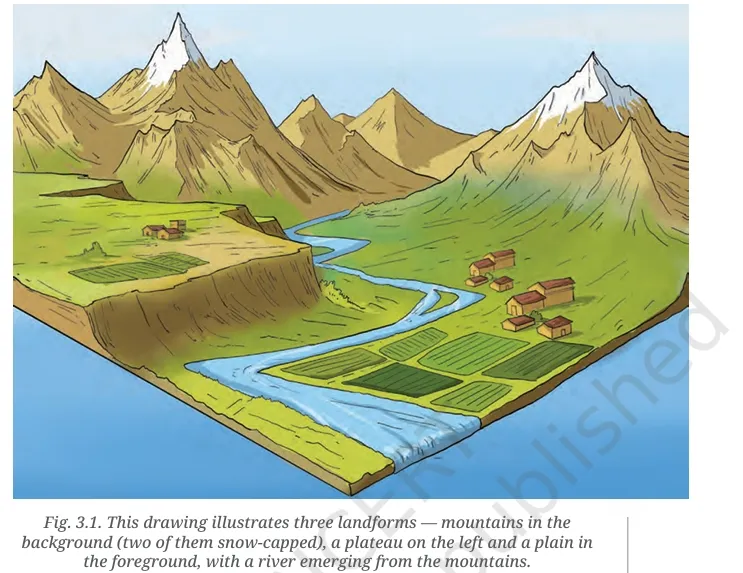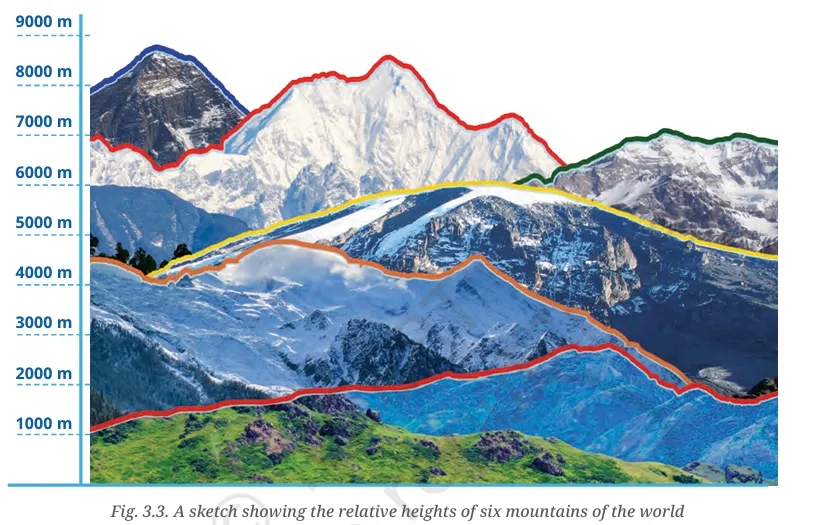This chapter in the Class 6 Social Science syllabus helps students understand different landforms like mountains, plateaus, and plains, and how they influence human life. The NCERT solutions provide clear, accurate answers to all textbook questions, supporting Class 6 exam preparation.
These solutions follow the latest exam pattern and are useful for revising key concepts efficiently.
Practicing with NCERT solutions along with previous year papers can strengthen understanding and improve performance in exams. This chapter forms an important part of the geography section and helps build a strong foundation for higher classes.
NCERT Solutions for Class 6 Social Science Chapter 3 Landforms and Life
Chapter 3 Landforms and Life introduces students to the different types of landforms found on Earth, such as mountains, plateaus, and plains, and explains how they are formed.
The chapter highlights how these landforms influence human settlements, occupations, and lifestyle. Understanding these concepts is important as they form a key part of the Class 6 Social Science syllabus and often appear in exams.
The NCERT solutions for this chapter are designed to help students answer textbook questions confidently and prepare effectively for exams by aligning with the exam pattern and supporting practice through previous year papers.
Class 6 Social Science Chapter 3 Landforms and Life Question Answer
NCERT Solutions for Class 6 Social Science Chapter 3 Landforms and Life are provided below to help students understand the concepts thoroughly and prepare well for exams.
These solutions cover all important questions, activities, and exercises from the chapter. By going through these answers, students can strengthen their knowledge and practice according to the latest syllabus and exam pattern.

-
What are the major types of landforms and their significance to life and culture?
The major landforms are mountains, plateaus, and plains.
-
Mountains influence climate, provide water through rivers, support unique flora and fauna, and are often regarded as sacred.
-
Plateaus are elevated flatlands rich in minerals that support mining, and in some regions, agriculture.
-
Plains have fertile soil suitable for agriculture, support dense populations, and enable cultural and economic development.
-
What are the challenges and opportunities of life associated with each landform?
-
Mountains: Challenges include landslides, avalanches, harsh climate. Opportunities include tourism, terrace farming, and pilgrimages.
-
Plateaus: Challenges include less fertile soil. Opportunities include mining, waterfalls, and tourism.
-
Plains: Challenges include floods, overpopulation, and pollution. Opportunities include fertile agriculture, river navigation, and trade.
Let’s Explore Activities

-
Observe the school’s surroundings. What kind of landscape do you see? Will the landscape change within 50 kilometres?
Example: The school is in a plain area. The landscape will change to hilly regions within 50 km.
-
Discuss a journey through a region of India. List different landscapes seen on the way.
Example: Journey from Delhi to Nainital: flat plains, gentle hills, and steep mountains.
-
Which colour is the Ganga plain?
Green.

-
What does the white expanse represent?
Snow-covered Himalayas or high-altitude regions.
-
What does the brown expanse at the bottom left represent?
Hilly or mountainous areas.
-
Examples of sacred river sources or confluences from your region?
Examples: Prayagraj (confluence of Ganga, Yamuna, and Saraswati), Gangotri (source of Ganga).
-
Name some popular tourist destinations in India and identify their landforms.
Shimla – Mountain
Goa – Coastal plain
Jaipur – Plateau region
Varanasi – Plain
Chapter-end Questions
-
In what type of landform is your town/village/city located? Which features mentioned in this chapter do you see around you?
Example: My city is in the plain region. I see fertile fields, river systems, and agricultural settlements.
-
Describe the three landforms you came across on the way from Chhota Nagpur to Prayagraj and Almora.
Chhota Nagpur – Plateau with minerals and forests
Prayagraj – Plain with fertile soil and rivers
Almora – Mountainous region with steep slopes and forests
-
List a few famous pilgrimage spots in India along with the landforms in which they are found.
Kedarnath – Mountain
Varanasi – Plain
Amarnath – Mountain
Rameswaram – Coastal plain
-
State whether true or false
-
The Himalayas are young mountains with rounded tops. False
-
Plateaus usually rise sharply at least on one side. True
-
Mountains and hills belong to the same type of landform. True
-
Mountains, plateaus and rivers in India have the same types of flora and fauna. False
-
Ganga is a tributary to the Yamuna. False
-
Deserts have unique flora and fauna. True
-
Melting snow feeds rivers. True
-
Sediments from rivers deposited in the plains makes the land fertile. True
-
All deserts are hot. False
-
Match words in pairs

Mount Everest – climbing
rafting – waterway
camels – desert
plateau – roof of the world
Gangetic plains – rice fields
Mount Kilimanjaro – Africa
Yamuna – tributary
Ganga – river
NCERT Solutions for Class 6 Social Science Chapter 3 PDF Download
NCERT Solutions for Class 6 Social Science Chapter 3 Landforms and Life PDF download is available below for students to access and use for their exam preparation.
This PDF contains accurate and well-explained answers to all the questions, activities, and exercises from the chapter.
It is designed as per the latest CBSE Class 6 Social Science syllabus and exam pattern, helping students revise important concepts easily. Download the PDF provided below and enhance your understanding of the chapter to perform better in exams.













